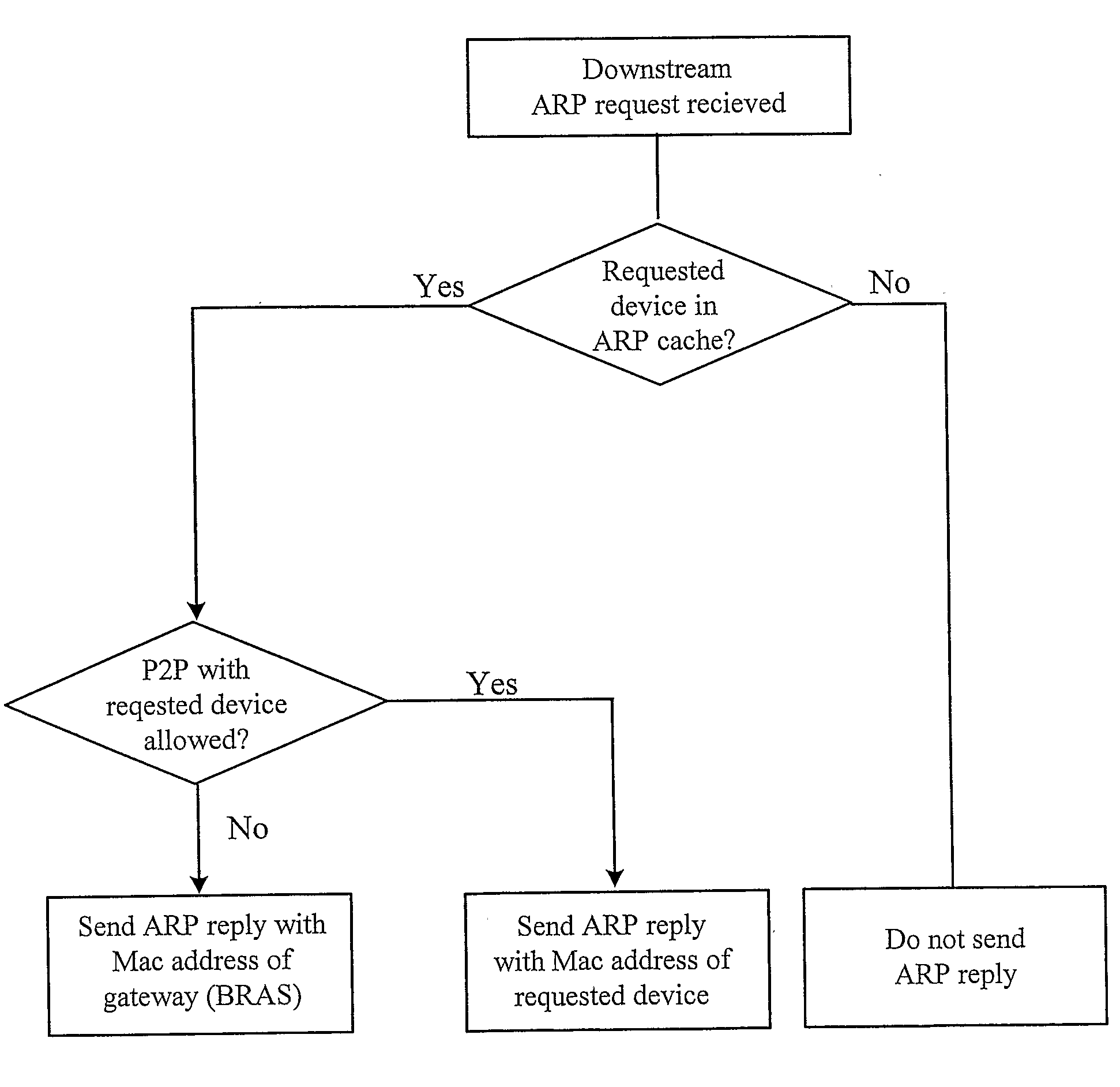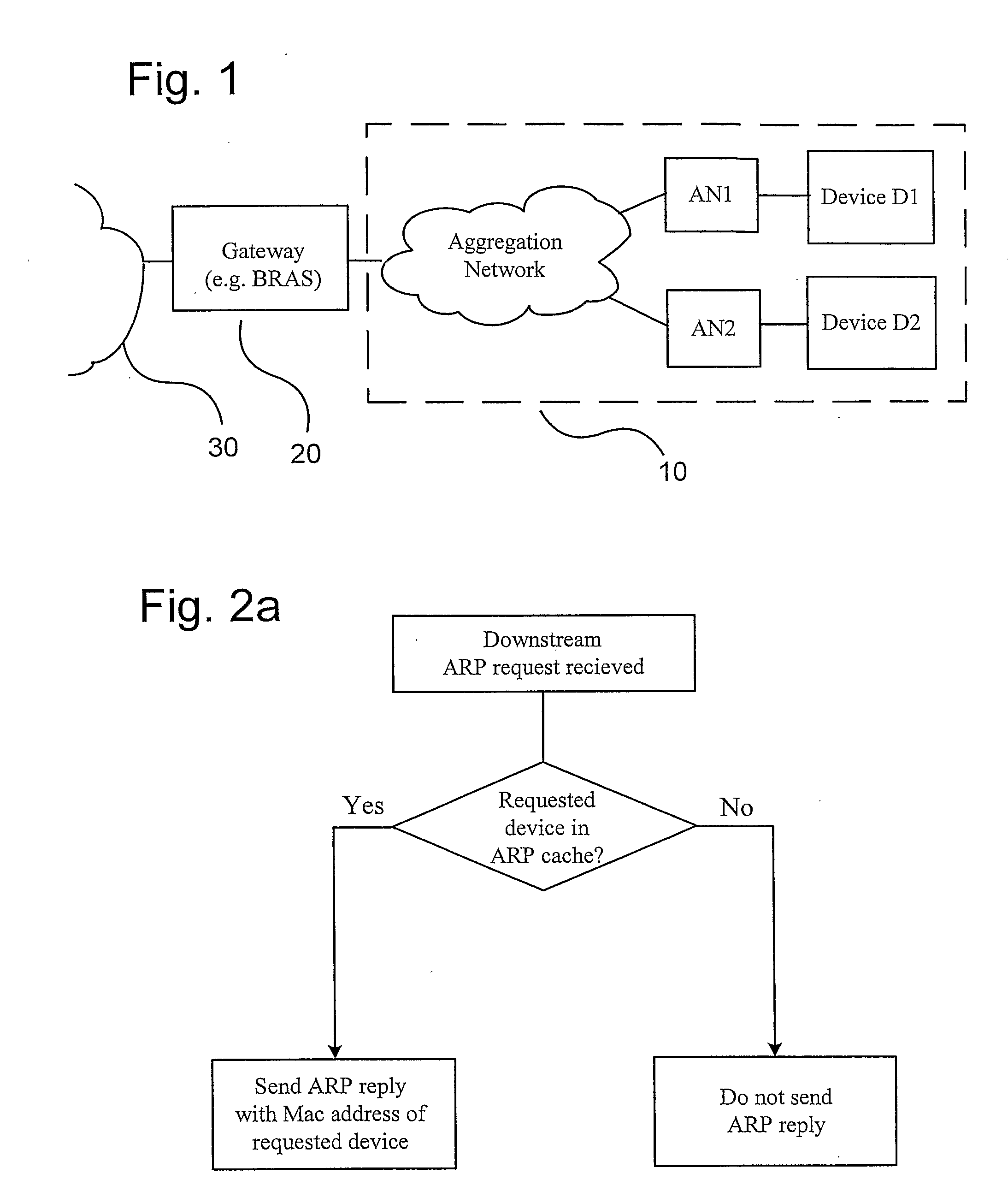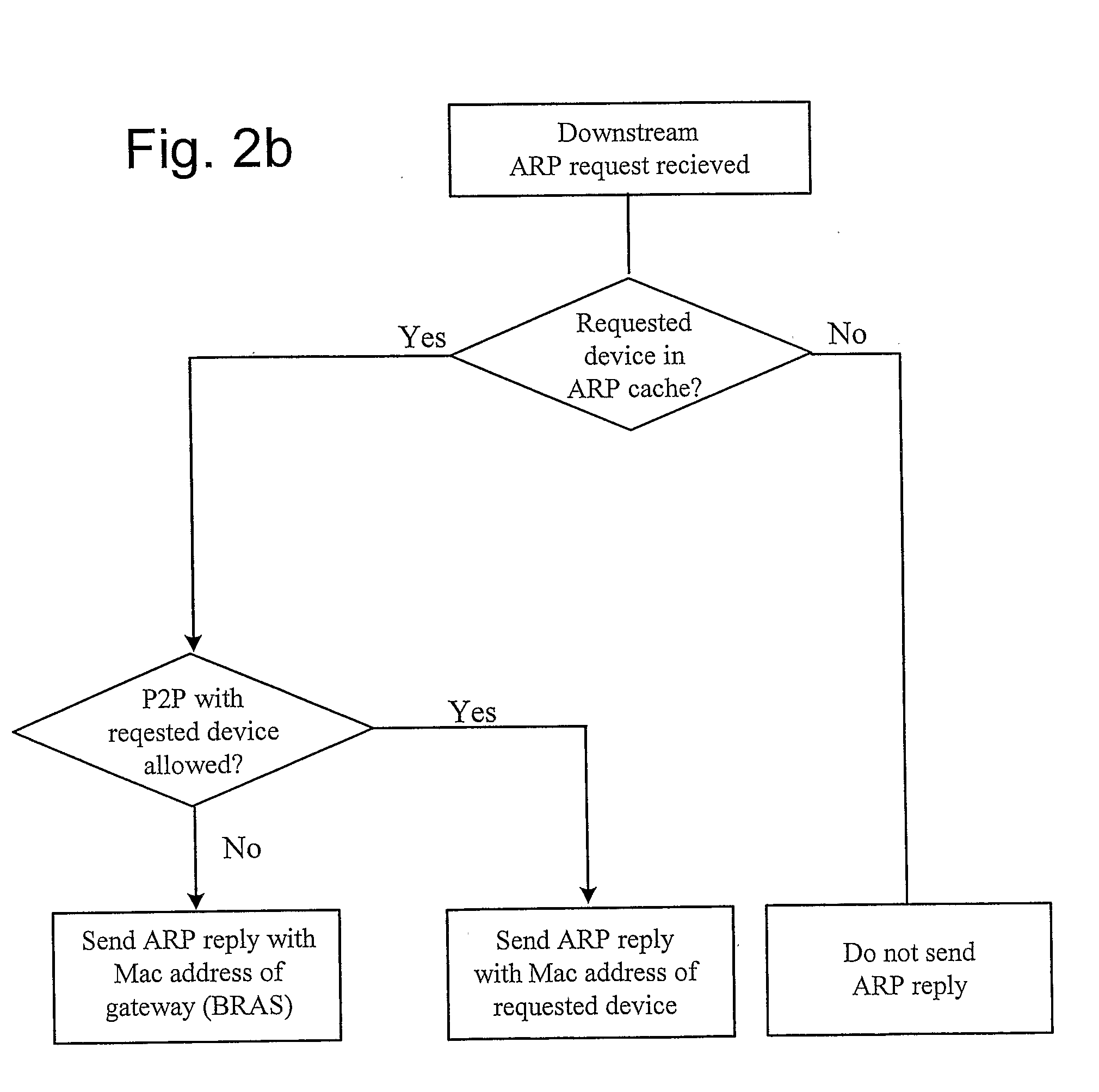Method and System for Local Peer-to-Peer Traffic
a peer-to-peer and traffic technology, applied in the field of digital communication systems, can solve the problems of consuming a lot of bandwidth upstream for future applications such as video conferencing, unoptimized to force this type of local p2p traffic, and consuming a lot of bandwidth for p2p file sharing, etc., and achieve the effect of bandwidth efficiency
- Summary
- Abstract
- Description
- Claims
- Application Information
AI Technical Summary
Benefits of technology
Problems solved by technology
Method used
Image
Examples
Embodiment Construction
[0041]The Downstream and Upstream ARP Proxies will now be described, with reference to an aggregation network and its connection to a Broadband and to e.g. Internet. Also describe will be how most of the layer 2 security issues can be solve and how to enable a fair handling of best effort traffic in a network where local Peer-to-Peer, P2P, is allowed. Finally will be described how the invention works when using a VLAN (Virtual Local Area Network) dedicated to local P2P traffic in the access network Referring now to FIG. 1, it illustrates an example access network where the present invention is applicable. In the figure is shown two end user devices D1 and D2, each connection to respective AN1 and AN2. These AN:s (Access Node) may be, e.g. DSLAMs (Digital Subscriber Line Access Multiplexer, a unit in a telephone exchange which connects several DSL connections for forwarding of data to Internet). AN1 and AN2 connect to the Aggregation Network 10, i.e. a local network serving a number ...
PUM
 Login to View More
Login to View More Abstract
Description
Claims
Application Information
 Login to View More
Login to View More - R&D
- Intellectual Property
- Life Sciences
- Materials
- Tech Scout
- Unparalleled Data Quality
- Higher Quality Content
- 60% Fewer Hallucinations
Browse by: Latest US Patents, China's latest patents, Technical Efficacy Thesaurus, Application Domain, Technology Topic, Popular Technical Reports.
© 2025 PatSnap. All rights reserved.Legal|Privacy policy|Modern Slavery Act Transparency Statement|Sitemap|About US| Contact US: help@patsnap.com



